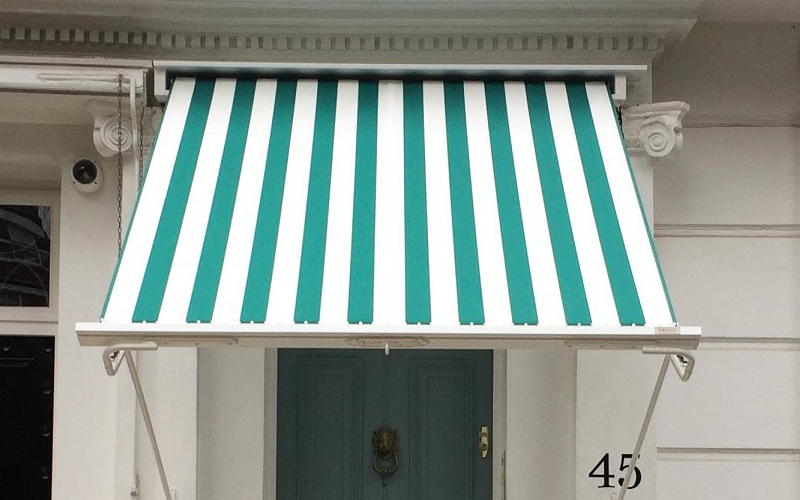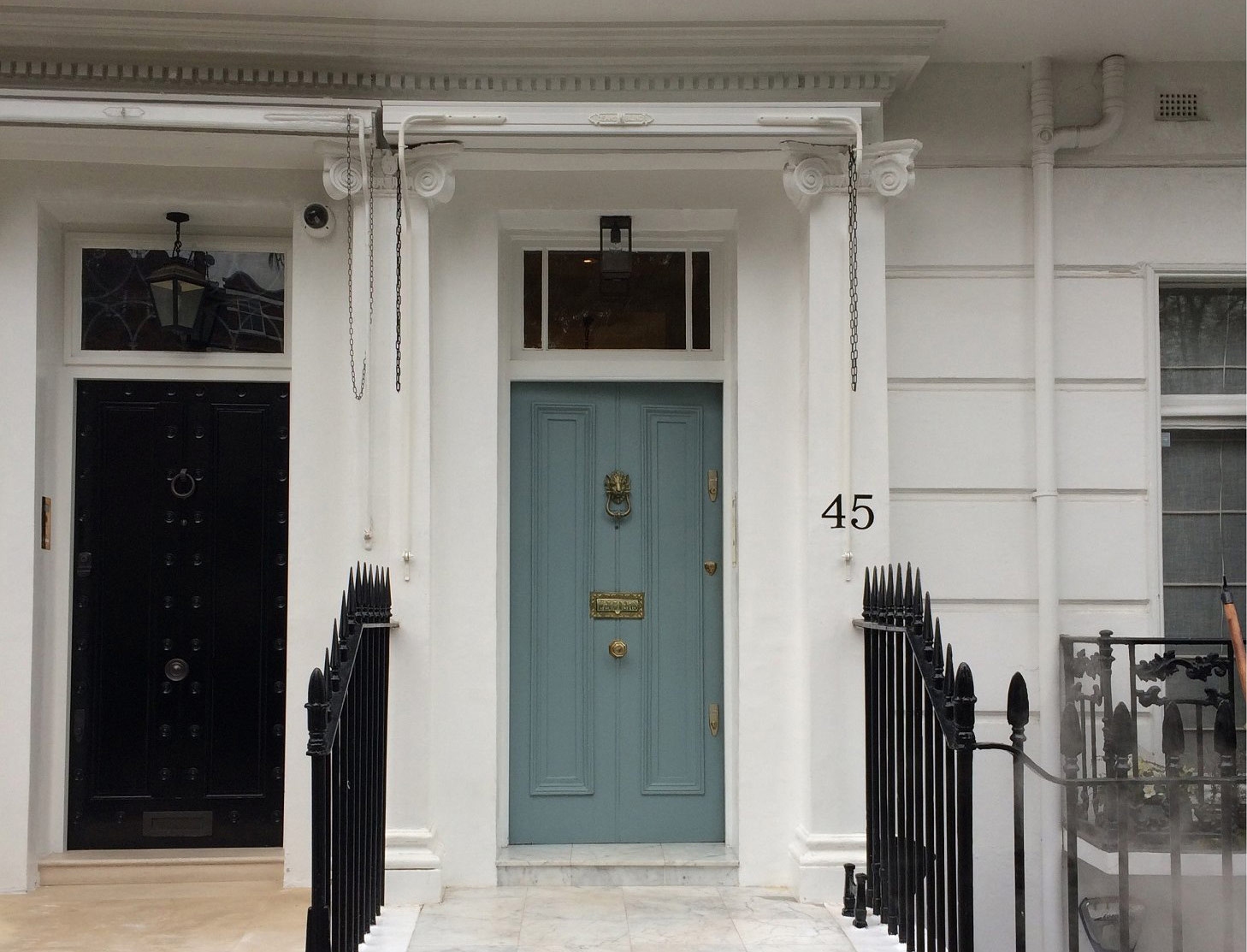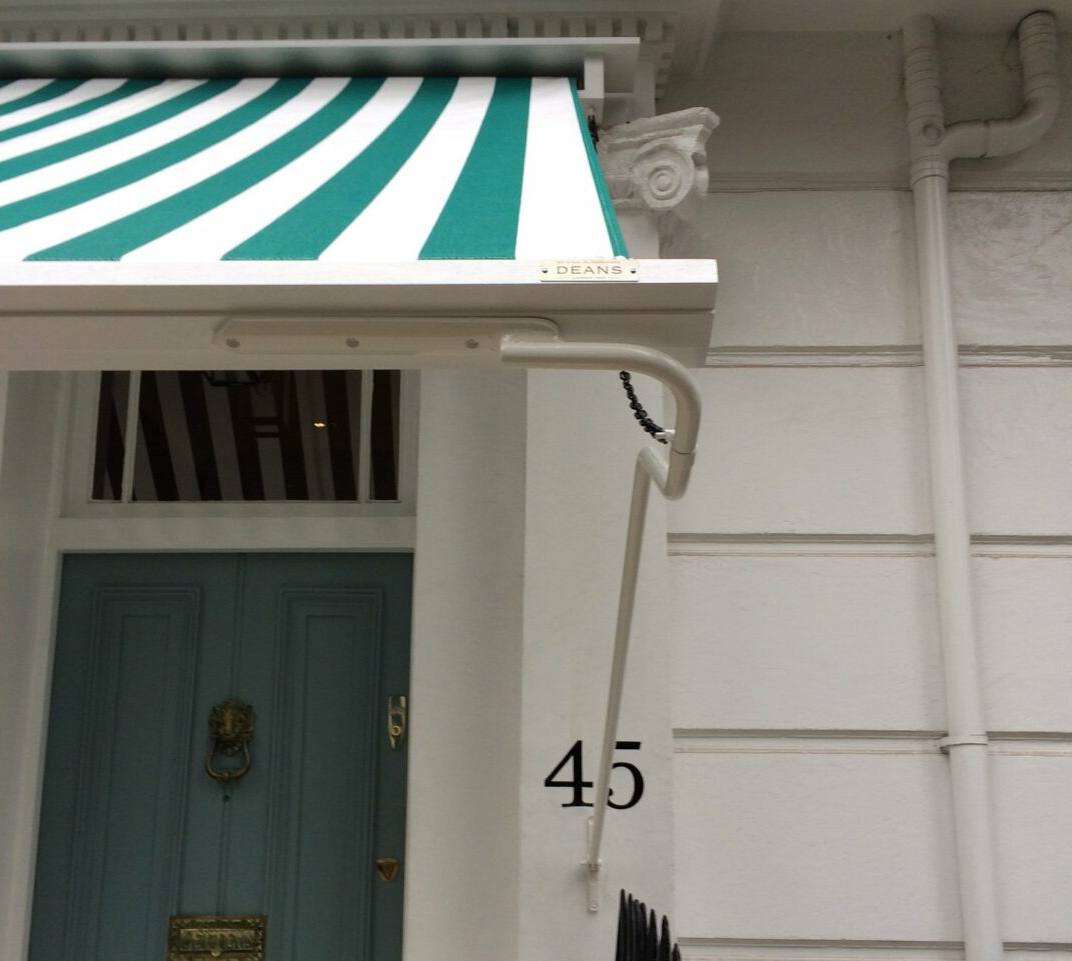Historical exterior awnings renovation

Deans Blinds has been manufacturing awnings and blinds since 1894 and this 135 years of experience has enabled us to be able to replicate/refurbish any type of historical awning. Where appropriate we will match a new awning to an existing awning in order to retain consistency of style though we will use the latest materials so that the appearance is matched by a robust construction. In the case of the left side awning shown in one of these images we manufactured a bespoke timber box with smaller sizes than usual. A smaller roller and bespoke arms and shoe brackets were also utilised to maintain original scale.
Traditional blinds and awnings are usually supplied with arms and slides and occasionally with trellis extension arms. Pivot or ‘shoe’ arms are also available. The awnings with arms and slides or trellis arms are supplied with a pull down pole for operation. Those supplied with pivot arms can be operated by gearbox or electric motor as well as by means of a pole. The awnings are wound on helical spring rollers, or on geared or electric motorised rollers. The rollers are housed in specially constructed wooden blind boxes with wooden front laths of a raised panel or ogee profile.
Awning boxes were originally fixed above the name fascia or entablature, and this allowed for the fabric to be set at a steep angle which gave a pleasing aspect to the awning, better ventilation and better weathering. However, the present tendency is for awning boxes to be fitted below the name fascia panel and consequently a much flatter blind is the result.
In the past fabrics for traditional awnings were of cotton “duck” and always in a cream or grey shade. However, today modern use of polyester and acrylic yarns have enabled us to offer a huge range of fabric colours and designs in materials with the consistency of traditional canvas but the weathering properties of infinitely better performance in use.







